SETI@HOMEという計画がある。
USAのバークレー大学で、アレシボの電波望遠鏡で受信した生データーを、小分けにして、世界中の個人のパソコンで、スクリーンセーバー代わりにして、処理してもらおう!という計画。(上手く説明できない!)
だれでも協力できる!(あなたも!)
宇宙人の「CQCQ]が判るかも?
今回来たメールです。
Dear ddk
This is an exciting time for SETI@home.
On March 18-20 2003 we travel to the Arecibo radio telescope
to re-observe the most promising candidates produced by our search so far.
There is a chance that these new observations will yield
the first real evidence of extraterrestrial life.
Thanks for being part of this history-making effort!
According to our records you have processed 18 work units
the most recent on October 16 2000.
Your contribution of computer time to SETI@home is greatly appreciated.
If you have taken a break from SETI@home now is a great time
to start up again; you can download the latest software at
http://setiathome.berkeley.edu/download.html
Support SETI@home - Join The Planetary Society
----------------------------------------------
Without the unwavering support of The Planetary Society
we would not be embarking on this round of re-observations.
We strongly urge all SETI@home users to join The Planetary Society
and help keep our project alive. If you join now you'll receive a
free poster titled Is Anybody Out There? featuring an evocative
image of the millions of stars near the center of our galaxy. Go to:
http://planetary.org/html/member/SETIoffer.html
The Planetary Society supports several different searches for
extraterrestrial intelligence as well as extra-solar planet research
and many other worthwhile projects. For a look at the full range of
their activities visit http://planetary.org
Thanks also to our other major sponsors: the University of California
Sun Microsystems Network Appliance Fujifilm Computer Products and Quantum;
and to individuals around the world who have generously donated to SETI@home:
see http://setiathome.berkeley.edu/donor.html
Scientific News
---------------
With the help of participants like you SETI@home has analyzed
about 10000 hours of data from the Arecibo radio observatory
producing a database of several billion events
(spikes Gaussians pulses and triplets).
From this database we have extracted the candidates that
in our judgement have the greatest likelihood
of coming from an extraterrestrial synthetic source.
The factors in this evaluation include:
- Signal power
- Goodness of fit
- Detection several different times
- Proximity to a nearby star especially one similar to our Sun.
Our next step is to re-observe the top candidates
by pointing a radio telescope at that location in the sky
and checking for a similar signal.
We applied for telescope time at Arecibo and were granted 24 hours
in three 8-hour chunks on March 18-20 2003.
If everything goes well this will be enough time to re-observe
about 150 candidates.
The re-observations will be done using the main receiver at Arecibo
which has a smaller beam and greater sensitivity than
the antenna we normally use.
We'll record the re-observations on magnetic tape
both in our usual format of 2 bits per sample
and in a higher-resolution format with 8 bits per sample.
Then we'll analyze the recorded data in three ways:
- We'll do a fast analysis using computers at Arecibo;
this will guide us in choosing candidates on which to spend more time.
- We'll analyze the 2-bit data using the current SETI@home client;
this will take place during the week or two after the Arecibo visit.
- We'll analyze the 8-bit data using a new client program
based on BOINC (see below) yielding better sensitivity.
This will take place a month or two after the Arecibo visit.
More information on the re-observation project is here:
http://planetary.org/stellarcountdown/
Project News
------------
The re-observation is just one of the things keeping us busy.
We have built a new data recorder capable of handling
the 13-channel multibeam receiver at Parkes in Australia.
This will produce data for our new Southern SETI@home project
which we hope to start later this year if we can raise the necessary funds.
In addition we are preparing a new distributed computing project
Astropulse that will analyze our current SETI@home data
looking for evidence of evaporating black holes
fast pulsars and new types of ET signals.
See http://www.planetary.org/astropulses.html
Our upcoming distributed computing projects will use the
Berkeley Open Infrastructure for Network Computing (BOINC)
which we are developing with support from the National Science Foundation.
See http://boinc.berkeley.edu.
BOINC will also be used by science research projects in other areas
such as molecular biology and climate prediction.
BOINC lets you choose how much computer time to devote to each project.
The transition from SETI@home to BOINC will be gradual.
We'll continue to record new data at Arecibo even while BOINC ramps up;
for now you can help us most by continuing to run SETI@home.
Whether or not the re-observations find an ET signal
SETI@home has been a tremendous success and a lot of fun.
We are very grateful for the participation and enthusiasm
of our users all over the world
and we look forward to continuing working together
to investigate the mysteries of the universe.
Dr. David P. Anderson
Project Director SETI@home
http://setiathome.berkeley.edu
----------------------------------------------------
If you wish to remove your name from the SETI@home email list
please go to the URL:
http://setiathome.berkeley.edu/cgi-bin/cgi?cmd=unsuba=1036164b=363554
USAのバークレー大学で、アレシボの電波望遠鏡で受信した生データーを、小分けにして、世界中の個人のパソコンで、スクリーンセーバー代わりにして、処理してもらおう!という計画。(上手く説明できない!)
だれでも協力できる!(あなたも!)
宇宙人の「CQCQ]が判るかも?
今回来たメールです。
Dear ddk
This is an exciting time for SETI@home.
On March 18-20 2003 we travel to the Arecibo radio telescope
to re-observe the most promising candidates produced by our search so far.
There is a chance that these new observations will yield
the first real evidence of extraterrestrial life.
Thanks for being part of this history-making effort!
According to our records you have processed 18 work units
the most recent on October 16 2000.
Your contribution of computer time to SETI@home is greatly appreciated.
If you have taken a break from SETI@home now is a great time
to start up again; you can download the latest software at
http://setiathome.berkeley.edu/download.html
Support SETI@home - Join The Planetary Society
----------------------------------------------
Without the unwavering support of The Planetary Society
we would not be embarking on this round of re-observations.
We strongly urge all SETI@home users to join The Planetary Society
and help keep our project alive. If you join now you'll receive a
free poster titled Is Anybody Out There? featuring an evocative
image of the millions of stars near the center of our galaxy. Go to:
http://planetary.org/html/member/SETIoffer.html
The Planetary Society supports several different searches for
extraterrestrial intelligence as well as extra-solar planet research
and many other worthwhile projects. For a look at the full range of
their activities visit http://planetary.org
Thanks also to our other major sponsors: the University of California
Sun Microsystems Network Appliance Fujifilm Computer Products and Quantum;
and to individuals around the world who have generously donated to SETI@home:
see http://setiathome.berkeley.edu/donor.html
Scientific News
---------------
With the help of participants like you SETI@home has analyzed
about 10000 hours of data from the Arecibo radio observatory
producing a database of several billion events
(spikes Gaussians pulses and triplets).
From this database we have extracted the candidates that
in our judgement have the greatest likelihood
of coming from an extraterrestrial synthetic source.
The factors in this evaluation include:
- Signal power
- Goodness of fit
- Detection several different times
- Proximity to a nearby star especially one similar to our Sun.
Our next step is to re-observe the top candidates
by pointing a radio telescope at that location in the sky
and checking for a similar signal.
We applied for telescope time at Arecibo and were granted 24 hours
in three 8-hour chunks on March 18-20 2003.
If everything goes well this will be enough time to re-observe
about 150 candidates.
The re-observations will be done using the main receiver at Arecibo
which has a smaller beam and greater sensitivity than
the antenna we normally use.
We'll record the re-observations on magnetic tape
both in our usual format of 2 bits per sample
and in a higher-resolution format with 8 bits per sample.
Then we'll analyze the recorded data in three ways:
- We'll do a fast analysis using computers at Arecibo;
this will guide us in choosing candidates on which to spend more time.
- We'll analyze the 2-bit data using the current SETI@home client;
this will take place during the week or two after the Arecibo visit.
- We'll analyze the 8-bit data using a new client program
based on BOINC (see below) yielding better sensitivity.
This will take place a month or two after the Arecibo visit.
More information on the re-observation project is here:
http://planetary.org/stellarcountdown/
Project News
------------
The re-observation is just one of the things keeping us busy.
We have built a new data recorder capable of handling
the 13-channel multibeam receiver at Parkes in Australia.
This will produce data for our new Southern SETI@home project
which we hope to start later this year if we can raise the necessary funds.
In addition we are preparing a new distributed computing project
Astropulse that will analyze our current SETI@home data
looking for evidence of evaporating black holes
fast pulsars and new types of ET signals.
See http://www.planetary.org/astropulses.html
Our upcoming distributed computing projects will use the
Berkeley Open Infrastructure for Network Computing (BOINC)
which we are developing with support from the National Science Foundation.
See http://boinc.berkeley.edu.
BOINC will also be used by science research projects in other areas
such as molecular biology and climate prediction.
BOINC lets you choose how much computer time to devote to each project.
The transition from SETI@home to BOINC will be gradual.
We'll continue to record new data at Arecibo even while BOINC ramps up;
for now you can help us most by continuing to run SETI@home.
Whether or not the re-observations find an ET signal
SETI@home has been a tremendous success and a lot of fun.
We are very grateful for the participation and enthusiasm
of our users all over the world
and we look forward to continuing working together
to investigate the mysteries of the universe.
Dr. David P. Anderson
Project Director SETI@home
http://setiathome.berkeley.edu
----------------------------------------------------
If you wish to remove your name from the SETI@home email list
please go to the URL:
http://setiathome.berkeley.edu/cgi-bin/cgi?cmd=unsuba=1036164b=363554











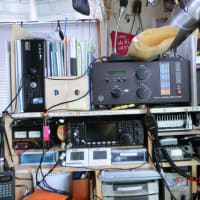
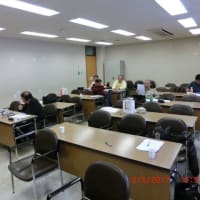
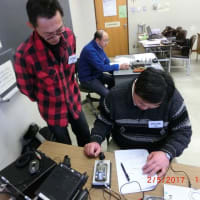
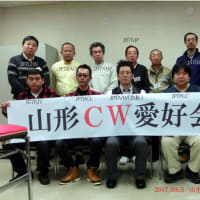

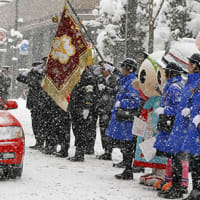
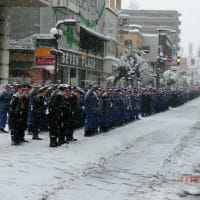
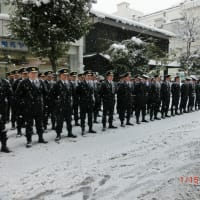
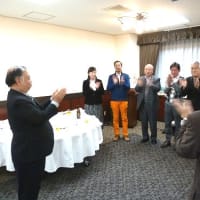
※コメント投稿者のブログIDはブログ作成者のみに通知されます